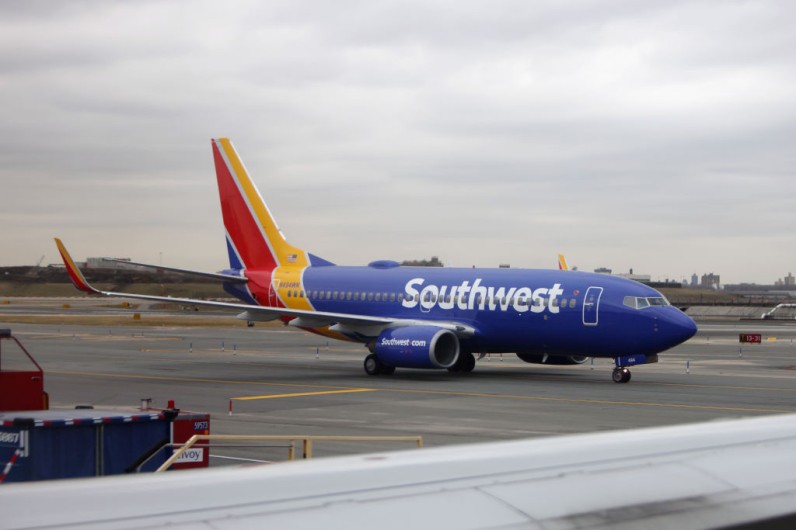
A Southwest Airlines jet encountered an unusual "Dutch roll" during a flight, according to investigators.
The aircraft had been exposed to a strong storm while parked outside and had undergone routine maintenance. Then, pilots observed peculiar movements of the rudder pedals.
Southwest Airlines' Encounter with Dutch Roll
Following the incident on May 25, Southwest mechanics discovered significant damage in the tail of the aircraft, specifically where the rudder is located. However, the National Transportation Safety Board (NTSB) has not yet determined the exact timing of the damage.
According to AP News, the Dutch roll is a fascinating phenomenon that involves a rhythmic combination of yaw, where the tail slides sideways, and the wingtips rocking up and down.
During the flight from Phoenix to Oakland, California, the Southwest jet encountered some turbulence at 34,000 feet and again at 32,000 feet during descent.
The condition can pose a significant risk, and modern aircraft are equipped with a "yaw damper" to effectively counteract the oscillations associated with this phenomenon.
Upon landing, Southwest mechanics discovered fractures in the metal bracket and ribs that secure a backup power control unit to the rudder system. Last week, investigators conducted a thorough examination of the damaged parts in Ogden, Utah.
According to the NTSB, the plane was left at the New Orleans airport overnight on May 16, when there were severe thunderstorms with strong winds up to 84 mph, heavy rain, and a tornado watch.
On May 23, during routine maintenance, the plane experienced an issue where the rudder pedals would move when the yaw damper was engaged, according to pilots.
According to the NTSB, pilots on the May 25 flight reported feeling the movement of the pedals during the Dutch roll, and this sensation continued even after landing.
Several Fleet Inspections
John Cox, a former airline pilot turned safety consultant, said the NTSB preliminary report suggests that the plane may have sustained damage during the storm. According to the individual, the strong winds may have resulted in the rudder of the stationary aircraft moving forcefully in both directions.
Following the flight, a Southwest inspection uncovered significant damage to the vertical stabilizer trailing edge ribs above and below the standby rudder power control unit.
According to the NTSB, Southwest Airlines conducted a thorough inspection of all 231 airplanes in its MAX fleet from June 17 to 20. The inspection revealed no signs of damage or abnormalities.
The FAA is currently looking into several recent incidents involving Southwest flights. One of these incidents occurred last month when a flight departed from a runway in Portland, Maine that was temporarily closed.
Another incident involved a flight descending to a low altitude of approximately 500 feet, just nine miles away from the Oklahoma City airport.
Reuters reported that an investigation is currently underway by the FAA regarding a Southwest 737 flight in April. The flight encountered challenging weather conditions, leading the pilots to make the decision to abort a landing attempt at Lihue airport in Hawaii. As a result, the aircraft came within approximately 400 feet of the ocean.







Join the Conversation